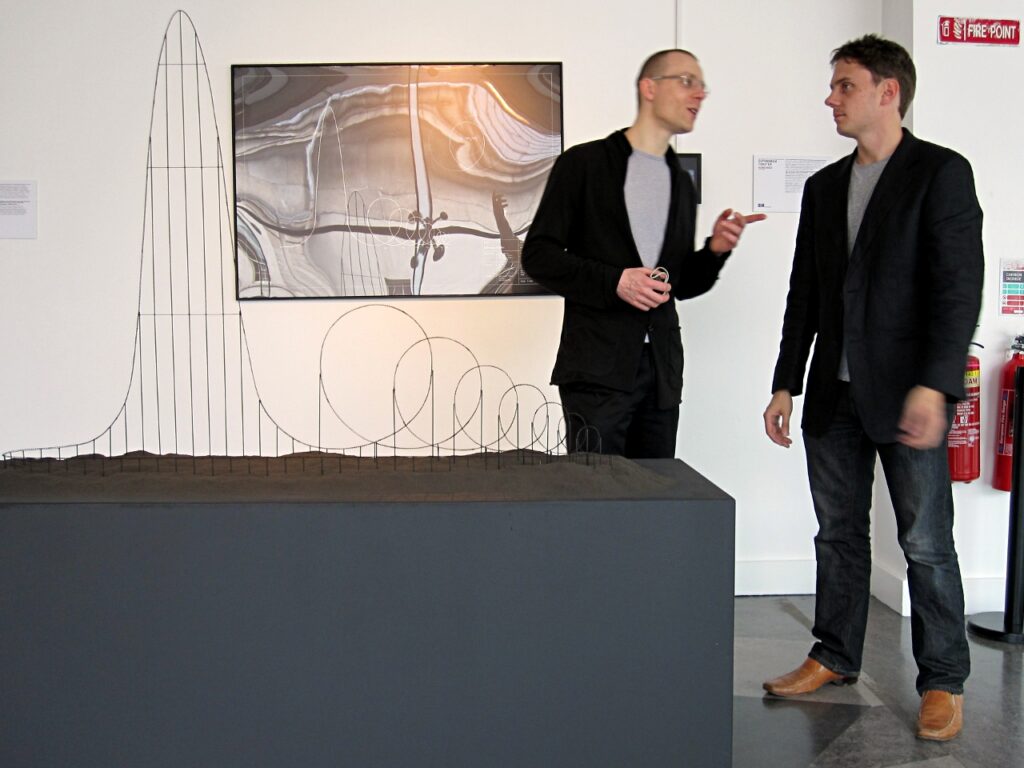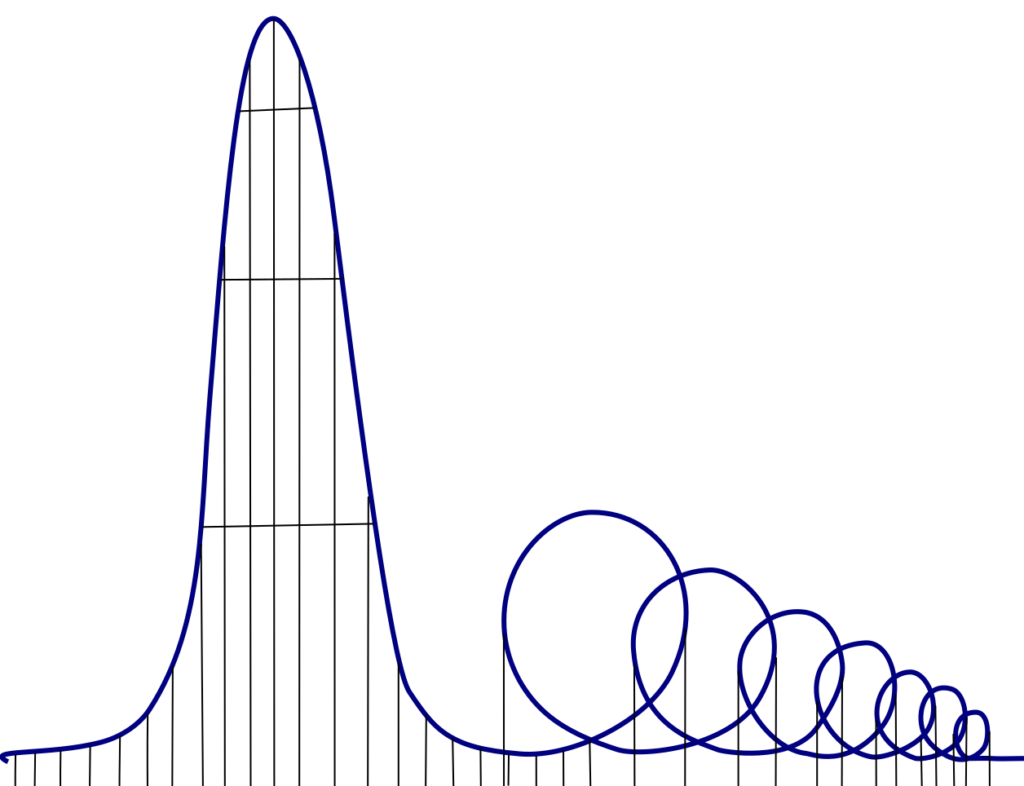For those who revel in the heart-pounding excitement of plummeting down steep drops, twisting through loops, and feeling the rush of adrenaline as G-forces push you into your seat, the world of roller coasters has long been a source of ultimate thrills.
Yet, what if there was a roller coaster that transcends the bounds of excitement and into the realm of the macabre? Enter the Euthanasia Coaster—a conceptual design that challenges even the bravest of thrill seekers.
In a world where roller coaster aficionados constantly chase the next adrenaline rush, the Euthanasia Coaster stands as a dark anomaly. It invites thrill-seekers to take the ultimate ride.
As we buckle up and prepare to explore this eerie creation, let’s unravel the fascination with roller coasters and delve into the mind of Julijonas Urbonas. This is where the pursuit of thrills takes an unexpected and chilling turn.
Buckle up, and keep arms and legs inside the car at all times, as we embark on a journey that promises to challenge both the boundaries of amusement and the ethical intricacies surrounding life’s final ride.

Who Invented the Euthanasia Coaster?
The concept of the Euthanasia Coaster is attributed to Julijonas Urbonas, an artist and engineer from Lithuania. Julijonas Urbonas was born in Vilnius, Lithuania in 1981.
His motivation behind creating the Euthanasia Coaster lies at the intersection of his love for art, engineering, and the exploration of the ethical challenges surrounding end-of-life choices.
Urbonas developed an interest in engineering and the arts at an early age. After graduating from high school he attended Vilnius Gediminas Technical University in Lithuania for his undergraduate studies.
Later, he continued his studies by pursuing a PhD in Design Interactions at the Royal College of Art in London. It was during his time at the Royal College of Art that he introduced the conceptual piece known as the Euthanasia Coaster as part of his graduate work in 2010.
Urbonas conceived the Euthanasia Coaster not as a practical ride but as a thought experiment. It is a conceptual piece designed to provoke discussion about the morality and ethics of assisted suicide.
His artistic vision aimed to push the boundaries of traditional amusement park design, challenging societal perceptions and stimulating conversations about end-of-life choices and who gets to make them.
How Does the Euthanasia Roller Coaster Work?
Looking at the model of the Euthanasia Roller Coaster it appears like any normal rollercoaster would. It has a lift hill, a steep drop, and a succession of loops that get smaller and smaller until the ride flattens out and returns to the starting station.
The only difference is that when you come back to the station, you’re dead.
The coaster begins with a slow and steady ascent to a towering height of 1600 feet. That’s almost 400 feet taller than the Empire State Building.
The ride to the top is a long and slow climb that lets the rider reflect on their life. At the top of the hill the train comes to a stop.
As the rider looks out over the breathtaking view they have a choice; either abort the ride or press a button to continue. Once the button is pressed the train is released and drops nearly vertically until it reaches a staggering 220 miles per hour before entering a series of seven loops to eternity.
Lethal G-Forces
G-forces, or gravitational forces, are measures of acceleration experienced by an object or person. The term “G” stands for gravity, and 1 G is the force of Earth’s gravity pulling an object towards its surface.
Most people can tolerate positive G-forces up to 5 or 6 Gs for a few seconds. Anything over that can lead to problems like decreased blood flow to the brain and can result in loss of consciousness.
Those who experience G-forces for longer periods of time, such as Fighter pilots or astronauts during rocket launches, must wear special suits to mitigate some of these effects.
In order for the Euthanasia Coaster to kill its riders in a humane manner, it must maintain a lethal level of 10 g force for 60 seconds. This is accomplished through the series of increasingly smaller loops – each one getting smaller and smaller.
The prolonged exposure to these levels of g-forces causes blood to flow away from the brain. This induces cerebral hypoxia, or lack of oxygen to the brain.
As the train enters the first loop, blood is forced out of the head and eyes. The rider will experience a gradual loss of vision, and eventually blackout.
As the train continues through the second loop the rider experiences g-LOC or g-force-induced loss of consciousness. According to Urbonas, “the second loop will definitely do its job.”
But if it doesn’t the next five loops are designed to ensure that survival is nearly impossible. By the time the train returns to the station, all occupants should be deceased. If they aren’t, the train could be run a second time.

Controversy Surrounding Assisted Suicide
Julijonas Urbonas’s idea captured the media spotlight during its presentation as part of the HUMAN+ exhibition at the Science Gallery in Dublin in 2011. It reawoke the old debate about the ethics of assisted suicide.
Supporters argue that a person, especially if they are terminally ill, should have a choice when to end their own life instead of someone deciding for them. They make a strong argument about the ethics of hospice care, which is essentially being forced to wait to die, versus taking control of your own life.
Opponents, on the other hand, raise concerns about the sanctity of life, the ethics of playing God, and the potential for coercion. Not to mention, being paid or paying someone to end someone’s life just sounds bad.
The Euthanasia Coaster exists solely as a hypothetical concept and has never been constructed or even planned. It was solely conceived as an art project and thought experiment, to explore the ethical dilemmas surrounding assisted suicide.
The artist’s intention is to stimulate discourse on the intersection of art, design, and the moral implications of end-of-life choices. It was intended to make us all look inside ourselves and ask, “When my time comes, how do I want to go out?”
References
Euthanasia Coaster
https://en.wikipedia.org/wiki/Euthanasia_Coaster
Julijonas Urbonas
https://julijonasurbonas.lt/euthanasia_coaster
Euthanasia Coaster: The Rollercoaster Actually Designed To Kill You
https://www.iflscience.com/euthanasia-coaster-the-rollercoaster-actually-designed-to-kill-you-64702
Lithuanian man designed Euthanasia Coaster to ‘humanely… take the life of a human being’

